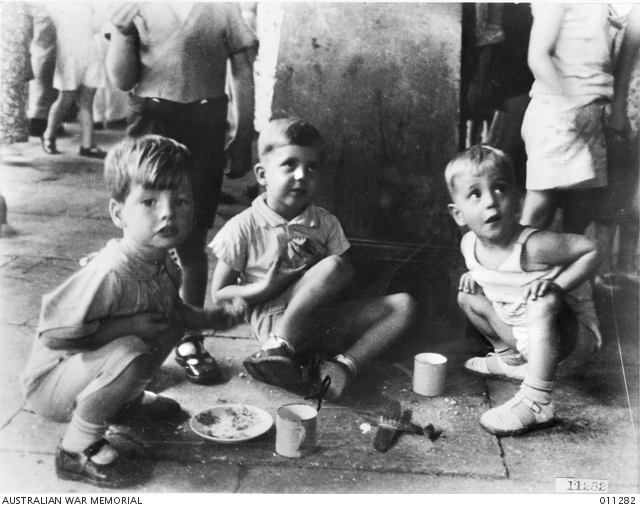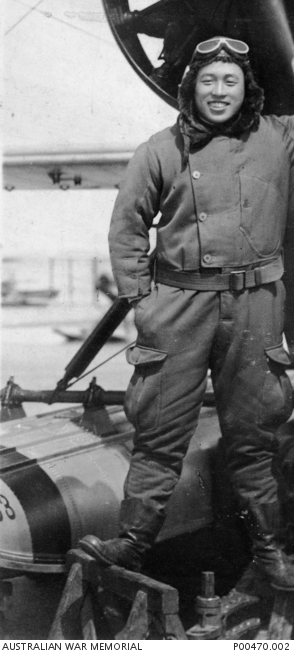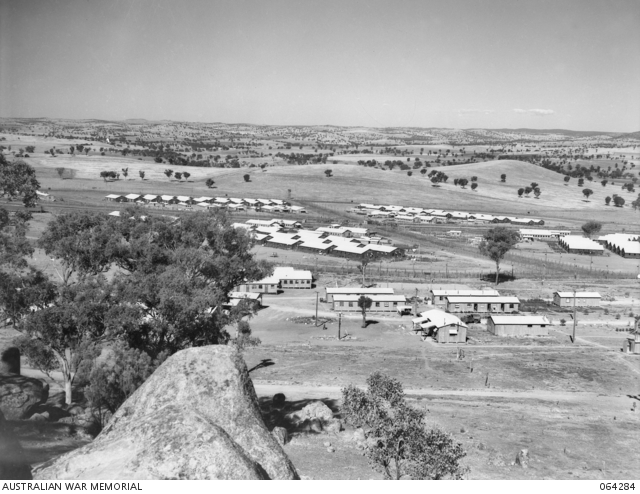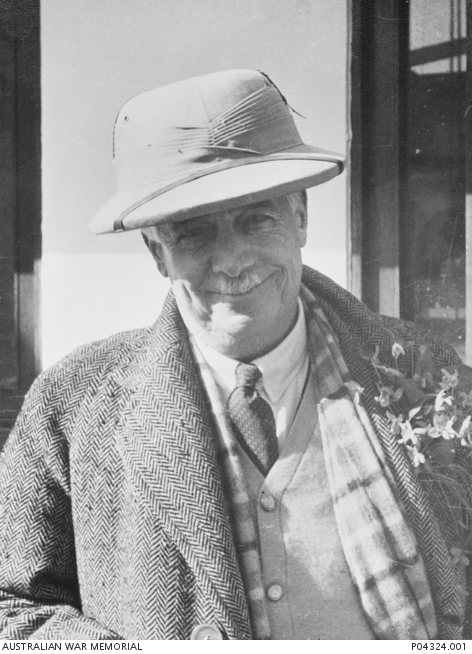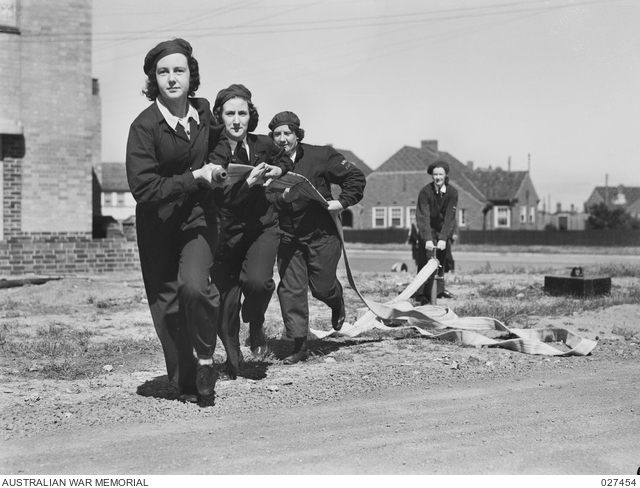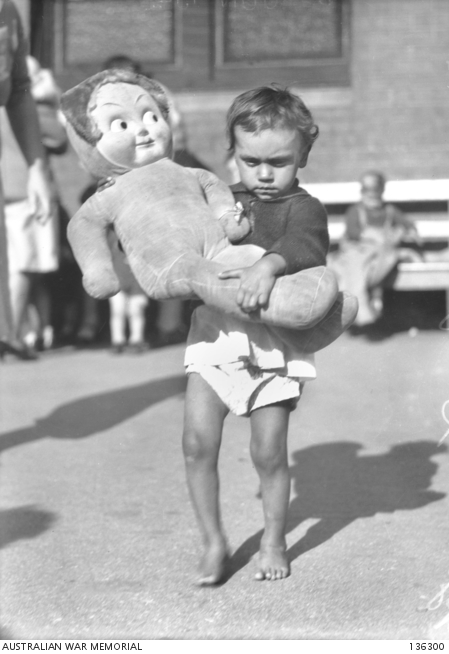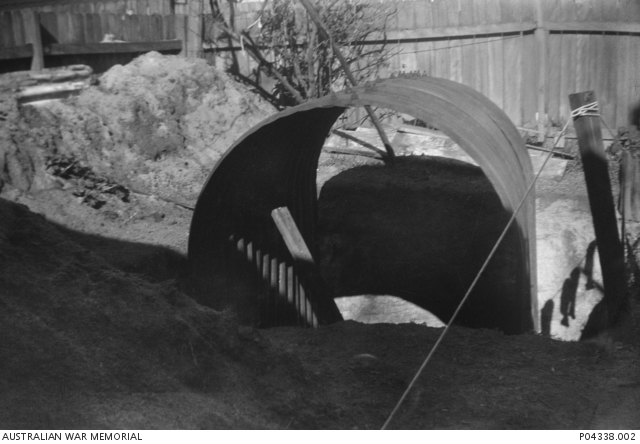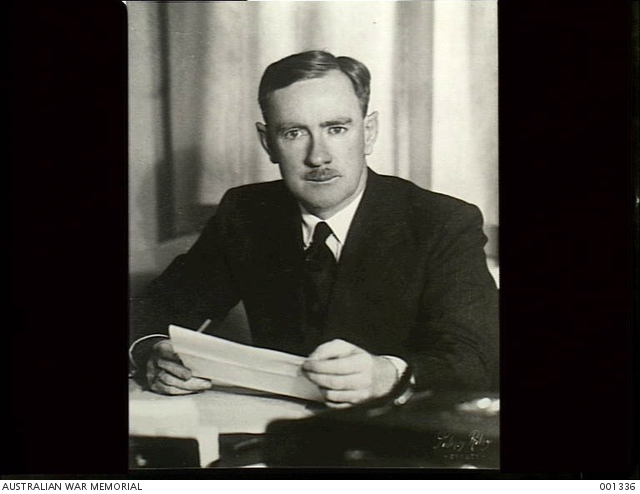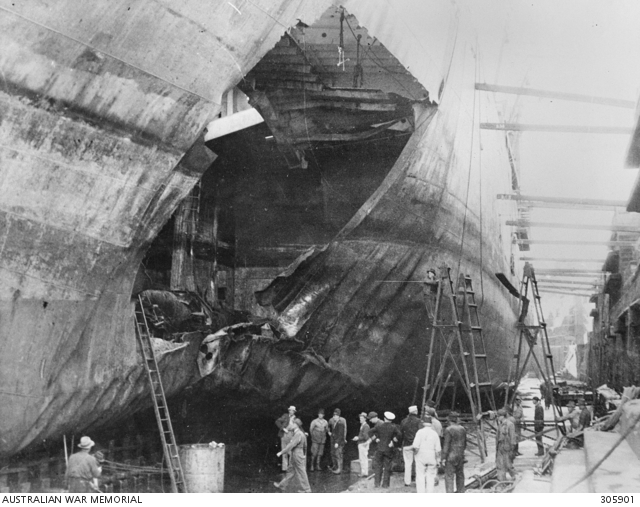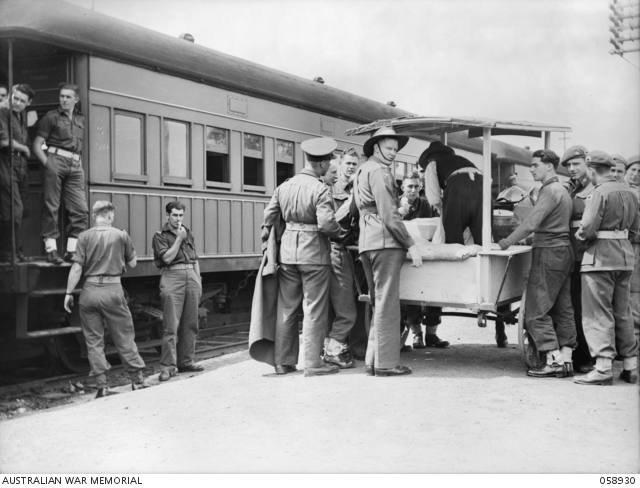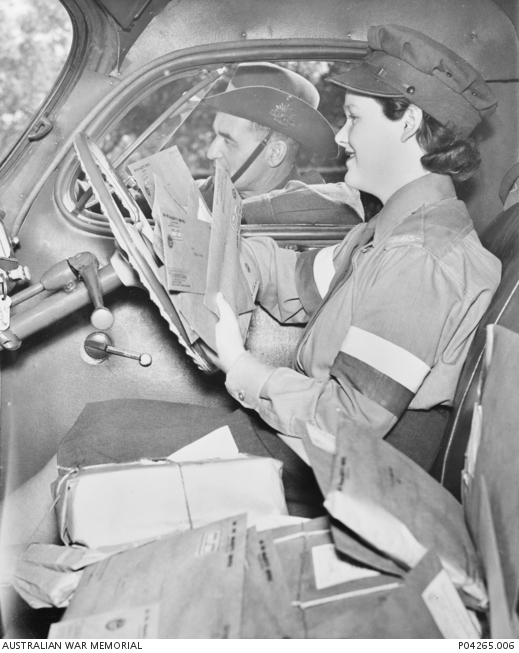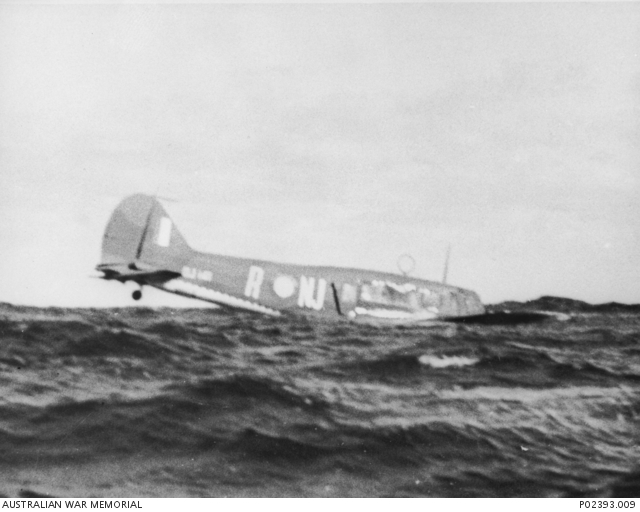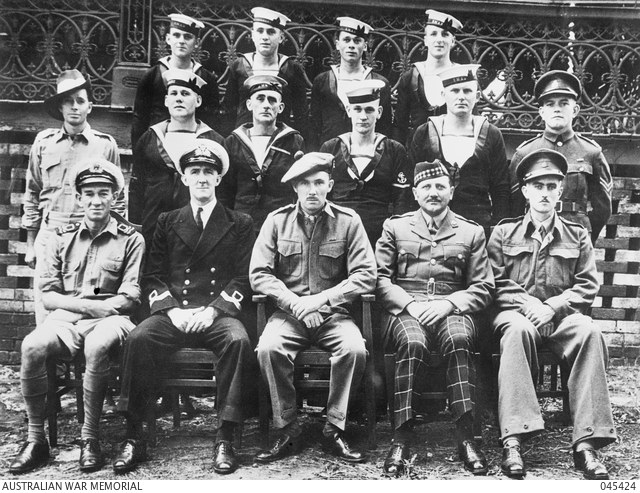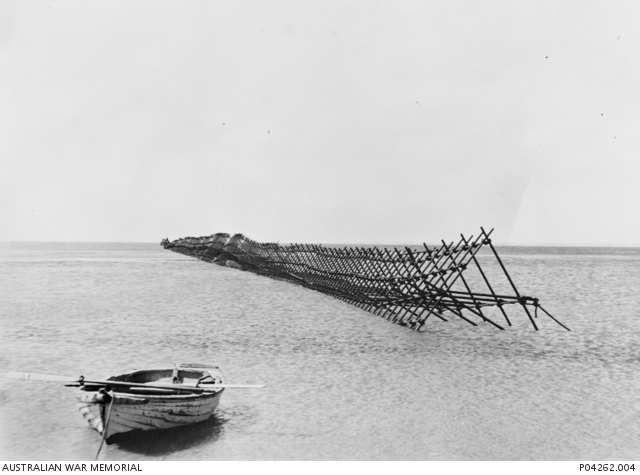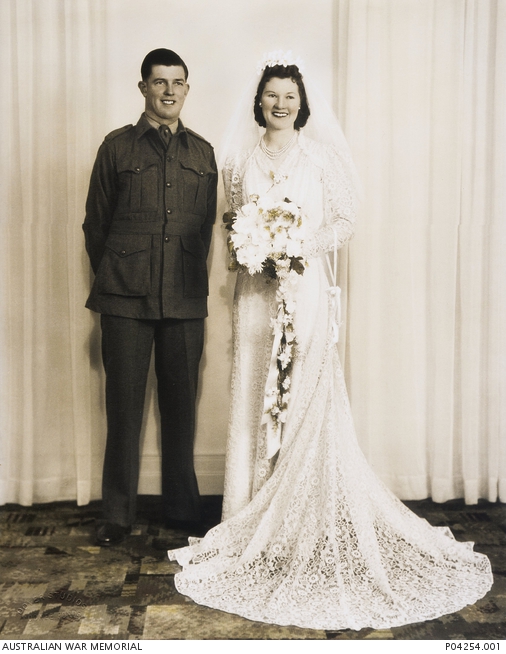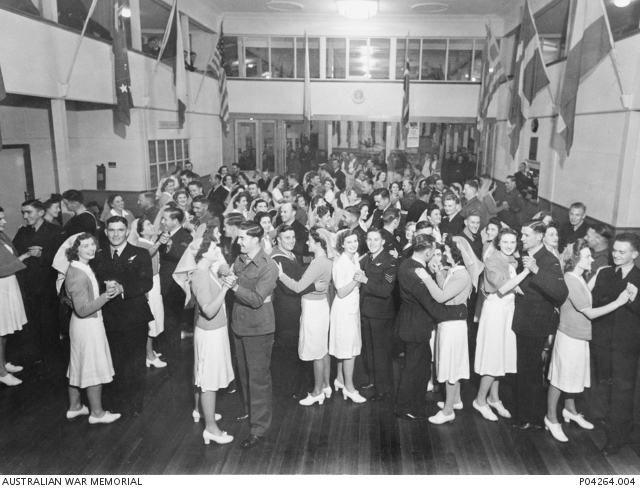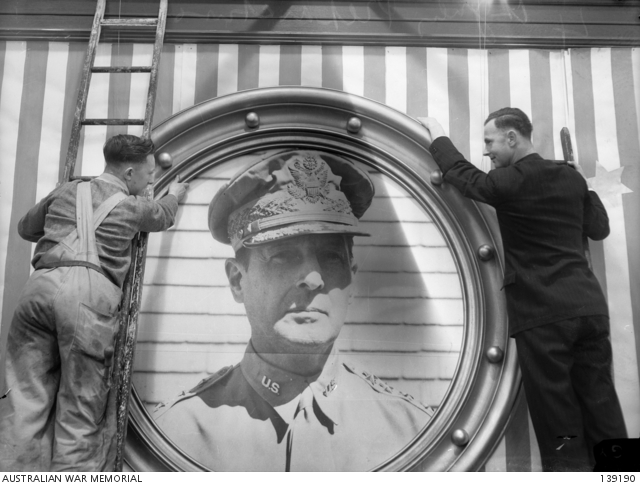Australia under attack: Photos
US liberty ship, Starr King, torpedoed off Port Macquarie, NSW, January 1943
Japanese dive bombers
Imperial Japanese Navy “Val” bombers. These carrier-based dive bombers were used in the first raids on Darwin.
HMAS Deloraine in Darwin Harbour, 19 February 1942
The tiny RAN corvette is silhouetted against a plume of smoke from other burning ships during the air raid. Nine vessels were sunk or damaged.
HMAS Lithgow, RAN corvette
HMAS Lithgow, commissioned in June 1941, reached Darwin on 19 January, 1942. The next morning Lithgow assisted two other RAN corvettes and the USS Edsall in sinking the Japanese submarine I-124. It was the Japanese Navy’s first loss to the RAN.
Lance Bombardier Fred Wombey, MM, 14th Heavy Anti-Aircraft Battery
Wombey was awarded his military medal for “gallant and distinguished service” during the first attack on Darwin.
“Darky” Hudson, MM
Gunner Wilbert “Darky” Hudson served with the 14th Heavy Anti-Aircraft Battery in Darwin.
Temporary cemetery at Broome, 1943
This cemetery, near the base of the Broome jetty, was for those killed in the raid.
A Dornier flying boat moored in Roebuck Bay, Broome
In Broome the massive tides and limited docking facilities meant that most flying boats had to wait at anchor while refuelling and taking on supplies, without landing their human cargo of more than 800 exhausted and frightened refugees.
Young evacuees play while their parents wait
These children – shown here in Australia – are just three of thousands forced to flee from Penang, in Malaysia, before the advancing Japanese. In the rush to evacuate civilians, many young refugees were unaccompanied and unrecorded.
Lifting a Japanese midget submarine from Sydney Harbour
Lieutenant Matsuo Keiu and Petty Officer Tsuzuku Masao died aboard this midget submarine when they blew it up rather than surrender after becoming caught in the harbour boom net.
Wrecked Japanese submarine recovered from Taylor’s Bay
A few days after the raid, Sydneysiders watched as the midget submarine containing the corpses of Lieutenant Chuma Kenshi and Petty Officer Omori Takeshi was winched from the bottom.
The submarine had been crippled by depth charges dropped by the motor launches of Sydney’s Channel Patrol Flotilla, made up of requisitioned private pleasure craft. This flotilla had been derisively referred to as the “Hollywood Fleet” until the night of the attack.
Japanese submariners
The Japanese submariners trained at the Japanese naval base at Kure, and developed a tight bond. Shown here in 1942 after a successful fishing trip are Lieutenant Matsuo Keiu (front left) and Lieutenant Chuma Kenshi (at rear left), both destined to die in the Sydney attack.
Suburban shell damage, Sydney, June 1942
This house in Sydney was damaged by shellfire from a Japanese submarine. The war correspondent Dr Norman Bartlett, a nearby resident, recalled: “I said to Eve my wife, ‘Well even if they ever had an air raid on Sydney it’d be like winning the lottery if anything dropped near an individual family.’ We got home and I heard the whiz. My wife said ‘What’s that?’ and I said ‘I think it’s a shell going over’ and it certainly was. It lightly splattered our house.”
Midget submarines on tour
In 1943 a composite midget submarine, made from parts of the two submarines recovered from Sydney Harbour, was taken on a 4,000-kilometre tour around south-eastern Australia to raise money for the war effort. It went to Wagga Wagga, Benalla, and Ballarat, across to Adelaide, then along the Victorian coast to Melbourne, and finally back to Sydney. Souvenirs of the submarines were sold along the way. The tour was a huge success, the exhibit drawing vast crowds. In Wagga Wagga over half the wartime population of about 12,000 visited the submarine.
Australian sailors search for unexploded bombs
Most of the bombs dropped near Townsville landed in the water and buried themselves in the mud. Locating and disposing of these bombs was a primitive and hazardous task.
Japanese internees at Woolenook Camp
This was one of the Loveday Internment Camp Group in the Barmera area in South Australia. The internees are all wearing maroon-dyed clothing, mostly surplus Australian Army uniforms.
Japanese acrobatic troupe in Australia
The Ueno troupe, a group of singers, dancers and acrobats from Japan, was on tour with Wirth’s Circus in Australia when the war broke out. Leader of the troupe Albert Ueno (third from left) had toured internationally since the age of five and spoke English. When the members of the troupe were interned in No. 4 Internment Camp, Tatura, Victoria, for the duration of the war, Albert became leader of B Compound.
ARP exercises Melbourne
On 1 November 1942, extensive ARP exercises were carried out under air raid conditions by 5,000 ARP workers in seven municipalities of the city of Melbourne under air raid conditions. In order to make the exercise as realistic as possible, mocked up Japanese bombs and scores of ‘casualties’ were employed.
ARP exercises Melbourne
In November 1942 extensive ARP exercises were carried out under air raid conditions by 5,000 ARP workers in seven municipalities of the city of Melbourne. Activities included lifting an unexploded bomb from a crater for loading onto the truck for transport to a safe area, fire-fighting, and removing casualties from the roof of a building by means of the “fireman’s lift”.
ARP exercises Melbourne
In November 1942 extensive ARP exercises were carried out under air raid conditions by 5,000 ARP workers in seven municipalities of the city of Melbourne. Activities included lifting an unexploded bomb from a crater for loading onto the truck for transport to a safe area, fire-fighting, and removing casualties from the roof of a building by means of the “fireman’s lift”.
Boy with mocked-up Japanese bombs
These “bombs” were to be used at a display staged by members of the ARP Section at Brighton, in Melbourne, on 7 April 1943.
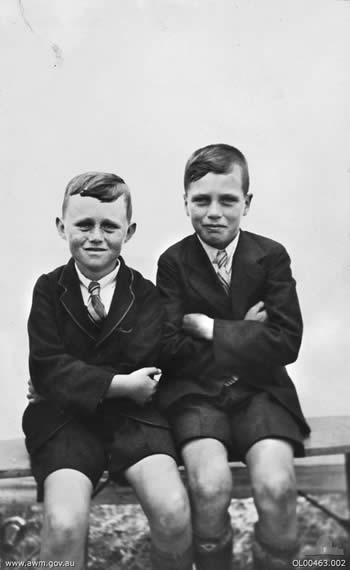
Bob England (left) and his school friend Keith Byrnes in 1942
I was 10 years old and attending Wallumbilla School at the time. Trenches were dug in our school yard by voluntary labour with pick and shovel. Air raid drill was carried out regularly. The local fire siren was to be used in the event of an air raid.
Freda Glyn and her doll
Following the Japanese thrust into the Pacific, civilians were encouraged to leave the population centres of northern Australia that were likely to become targets. Women and children were given priority. Evacuations increased after the bombing of Darwin and Katherine.
Freda Glyn was one of a group of 40 Aboriginal children evacuated from the Alice Springs area. Freda and her fellow evacuees, including her mother and sister, went via Melbourne to a Church Missionary Society evacuee camp in the Blue Mountains. She was presented with the doll at Spencer Street railway station in June 1942.
Evacuees at Spencer Street station
Following the Japanese thrust into the Pacific, civilians were encouraged to leave the population centres of northern Australia that were likely to become targets. Women and children were given priority. Evacuations increased after the bombing of Darwin and Katherine.
Adams family installing their Anderson shelter
This prefabricated, British-designed, Australian-made Anderson air raid shelter was purchased and erected by the Adams family of 405 Gardeners Road, Mascot, Sydney. Bessie Adams and her sons purchased the shelter a few weeks after the Japanese midget submarine attack on Sydney Harbour and the shelling of the coastal suburbs that followed.
Anderson shelters were designed before the outbreak of the Second World War and issued free to many British families. They were named after the British Home Secretary and Minister for Home Security, John Anderson. Although the shelters were made here, Australian families like the Adams had to buy them.
Adelaide children help construct air raid shelters, January 1942
People all over Australia, irrespective of their proximity to Japanese attacks, built air raid shelters. “Suburban police say people are burrowing like rabbits … most of the shelters are in a corner of the backyard … Types of shelters described vary from mere holes in the ground to well equipped large structures, and alterations made to garages and rooms in suitable homes.” Brisbane Courier Mail, 3 January 1942
Public air aid shelter
This large public air raid shelter was constructed in Hyde Park in Sydney but kept locked to prevent vandalism.
Margaret Tootell, VAOC
Margaret Tootell, a member of the VAOC in the Bendigo area, wearing her Girl Guides uniform. Just one of the thousands of civilians involved in VAOC activities, Tootell received this certificate for her VAOC service during the war on 25 September 1945, just three weeks after the Japanese surrender.
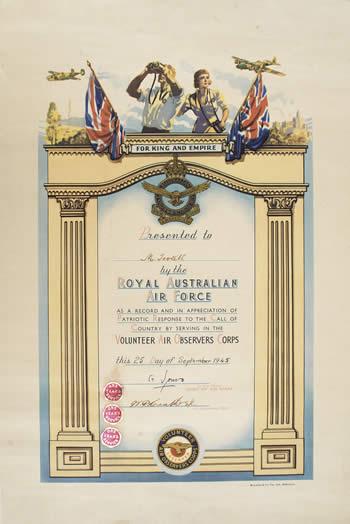
VAOC certificate
Margaret Tootell, a member of the VAOC in the Bendigo area, wearing her Girl Guides uniform. Just one of the thousands of civilians involved in VAOC activities, Tootell received this certificate for her VAOC service during the war on 25 September 1945, just three weeks after the Japanese surrender.
Aircraft spotter
Reclining in an Australian-made spotter’s chair, Gunner Laurel Hawkin scans the Townsville skyline for enemy aircraft at No. 79 Anti-Aircraft Searchlight (AASL) Battery at Pallarenda Beach. Maintained by a mixed group of 60 men and 21 AWAS personnel, No. 79 AASL Battery operated 90-centimetre Sperry searchlights, supporting a number of anti-aircraft emplacements overlooking Shelley Bay.
Myers coupon counter
Like many major retailers, Myers established an information centre after the introduction of clothes rationing. The rationing system was very complex and confused many.
Checking rationing scales
Scanning a copy of Melbourne’s Meat Bulletin, a city butcher acquaints himself with details of the new meat rationing scales before opening for business. The ration allowance of meat was generous; however, supply was occasionally scarce, particularly of the better cuts.
Rationing for Australians was never as strict as that endured by Europeans during the Second World War. Nonetheless, the weekly ration available to an adult was relatively meagre: two ounces [57 grams] of tea, one pound [454 grams] of sugar, and half a pound [227 grams] of butter.
Emergency fuel ration tickets
Owing to the immense concentration of Australian and American army and air forces in northern Queensland in May and June 1942, and a lack of completed bulk petroleum storage tanks, authorities were obliged to introduce these fuel ration tickets in order to severely curtail civilian use. The Queensland State Liquid Fuel Control Board noted: “Consumers engaged on urgent and essential work of national importance may make application for an additional ration.”
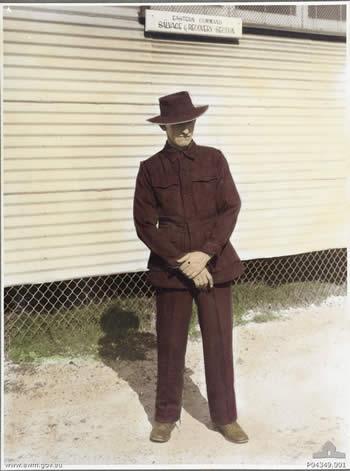
Internee uniform made from salvage
Ginger Meggs Salvage Corps
The “Ginger Meggs Salvage Corps” was named after the popular cartoon character of the time; here, children set out from the Raleigh Street State Primary School to find recyclable material, or “salvage”, around Essendon, in Melbourne, for the war effort.
Girls decorating their austerity Christmas tree
These children at a suburban school in Melbourne decorate a Christmas tree in November 1942.
Austerity suit
Mr V. F. Langsford, a tailor in Langsford Personality Clothes shop in Swanston Street, Melbourne, models his sugar bag “austerity suit” in September 1942. One of his assistants wears an outfit made of leftovers from suit lengths.
Private Evelyn Owen
Inventor of the Owen gun.
AWAS with Owen guns
Members of the Australian Women’s Army Service being instructed in the use of the Owen gun at Belmont in Queensland. From left to right: Lance Bombardier Lorna Molloy, Gunner Francis Fowler, Gunner Pamela Holden, instructor Warrant Officer Gilbert Page.
Christmas parade in Sydney, 1942
A display of Owen guns, invented and manufactured in Australia, feature in a procession through the streets of Sydney to recognise the contribution war workers were making to the war effort. The procession included almost 400 tanks, guns, fighting vehicles, and lorries carrying the products of munition factories.
Prototype
Prototype Sentinel tank undergoing trials at Villawood test track in Sydney, 1942.
Japanese fighter
This captured Japanese Zero fighter is being tested over Eagle Farm in Brisbane to help the Allies better understand its capabilities. US markings were intended to prevent its being mis-identified by aircraft spotters.
Japanese fighter’s drop tank
Two Australian technicians from the Council of Scientific and Industrial Research (CSIR) in Melbourne analyse the materials used in a fuel drop tank from a Japanese Zero fighter. Drop tanks were designed to give an aircraft greater range.
Beaufort aircraft factory at Fisherman’s Bend, Melbourne, 15 June 1943
The interior of one of the Department of Aircraft Production factories, showing Beaufort bombers in various stages of construction. Some of the components were made at railway workshops around the country. By the second half of 1943 the Melbourne factory alone was turning out about twenty aircraft a month. A total of 700 Beauforts – each made up of 39,000 parts – were built between October 1941 and August 1944.
Heating the barrel
These skilled munitions workers are heating the barrel of a 3.7-inch anti-aircraft gun in preparation for straightening it at the ordnance factory at Bendigo, Victoria, in April 1943.
US vessel under repair at Cockatoo Island dockyard, 1943
US merchant ship Peter H. Burnett in the Sutherland dock. The ship was torpedoed by a Japanese submarine east of Sydney in January 1943.
Troop train near Oodnadatta, May 1942
With sea lanes exposed to enemy attack the Allies had a major problem moving troops and supplies over land to Darwin. Troop trains could move armies from east to west but not from south to north. The narrow gauge Central Australian Railway from Adelaide ended at Alice Springs. A single line railway ran southeast from Darwin for 500km to Birdum. The 1000km from Birdum to the Alice was partially traversed by rutted vehicle tracks. In 1942 the AMF, CCC and the US Army worked together to build a road to connect the two railheads. When the link was complete truck drivers of the Australian Army Service Corps ran road convoys that transferred men and material that had been transported by troop train from supply depots and training camps in the south to the railhead to forward bases in the north.
A T Class Locomotive transports engineers of the 2/9th Field Company AIF from Adelaide to Alice Springs.
Troop train in South Australia
A Locomotive carries troops, supplies and equipment from Adelaide, across the harsh wastes of South Australia, to the railhead at Alice Springs.
Troops and trucks detrain at Alice Springs, December 1942
Men and trucks of the 122nd General Transport Company, Australian Army Service Corps, leave the train at Alice Springs to drive the next leg of their journey north.
Ice cream cart meeting a troop train, Clapham Junction 1943
Australian soldiers in transit from Melbourne to Queensland take advantage of an ice cream vendor.
Troops detraining, Clapham Junction 1943
Australian soldiers disembark at Clapham Junction, Queensland. They have travelled by troop train from Melbourne.
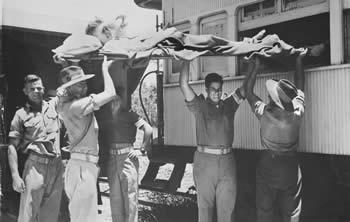
Ambulance train
Patients being loaded into a Queensland ambulance train in 1942. In many Queensland ambulance trains, the wounded could only be loaded into the ward cars through the windows. During the war hospital trains moved tens of thousands of sick and wounded personnel.
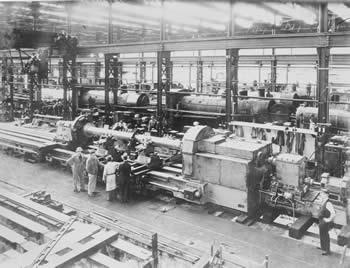
Gun lathe construction
Casting of a headstock section of a 36-inch lathe bed as part of the construction of a gun lathe made at the Ipswich Railway Workshops in 1943 in the Erecting Shop. It was the largest machine tool made in Australia at this time.
Anti-aircraft battery
This anti-aircraft battery at Hummock Hill, South Australia, protected the industrial centre and port of Whyalla. (The top image is the original photograph – complete with tracing paper overlay – which shows where the camouflage was to be placed; the image below shows the site prior to its being camouflaged.)
An AWAS despatch driver
Signalwoman J. Kelly, a member of the Australian Women’s Army Service, is delivering despatches to Sergeant W. Webster. She is wearing blue-and-white armbands to indicate she is on signals duty.
Amphibious assault training
Australians of the 2/24th Battalion and Americans from the 532nd Engineer Boat and Shore Regiment train together at Trinity Bay, Cairns, on 27 July 1943.
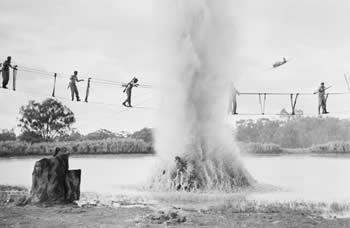
Soldiers of the Militia prepare for war
An RAAF Wirraway adds realism to the training.
Learning to use a bayonet
Lieutenant Simpson of H Company, Australian Training Centre (Jungle Warfare), instructs troops in bayonet fighting at the school near Canungra, Queensland, in 1943.
Learning to use a grenade discharger
Lieutenant F. V. Hill, an instructor with 5th Brigade, 3rd Division, teaches his men to use a grenade discharger during an exercise at the 3rd Division Jungle Training School at Coobaingalgi, in Queensland.
VDC instructors’ school
Personnel training in their newly-issued uniforms. Later in the war, the VDC became increasingly better equipped and trained.
VDC mortar platoon
Members of a mortar platoon from the 2nd (Victorian) Battalion, VDC, on exercise at Point Nepean, Victoria. Left to right: Private Keith MacAuley, Private Frederick Jeffery, and Private Clifford Smith.
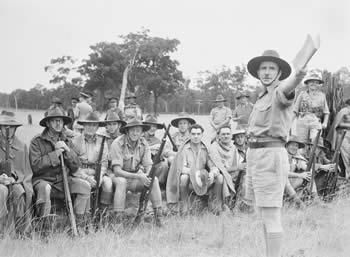
VDC guerrilla training
Some VDC members trained to act as mounted guerrillas in the event of an attack.
A NAOU patrol
A Nackeroo mounted patrol crosses the Katherine River, in the Northern Territory, in 1943.
An Anson aircraft of No. 73 Squadron, RAAF, forced down on the sea off Jervis Bay, NSW
The Link Trainer
A Dutch trainee pilot of No. 18 (Netherlands East Indies) Squadron, RAAF, undergoing instruction in a Link Trainer, a rudimentary flight simulator which has been set up in an office at RAAF Fairbairn, Canberra. Another member of the squadron is running the training session. He has a map and various instruments to refer to on his desk and is communicating with the pilot by means of a microphone and headphones.
Rescue on Moruya beach
This photograph was taken from one of the search aircraft from No. 73 Squadron.
Jaywick veterans
The men who carried out Operation Jaywick. Able Seaman Moss Berryman is on the left in the back row.
Hurdle defences
Hurdles were used as obstacles to prevent or obstruct enemy beach landings on many sections of the Australian coast. These photographs show the construction of hurdle defences in front of the beaches at Cockburn Sound, south of Fremantle, Western Australia, in 1943; they stretched for almost four kilometres.
Hurdle defences
Hurdles were used as obstacles to prevent or obstruct enemy beach landings on many sections of the Australian coast. These photographs show the construction of hurdle defences in front of the beaches at Cockburn Sound, south of Fremantle, Western Australia, in 1943; they stretched for almost four kilometres.
Training to fight invaders
Members of the 2/10th Armoured Regiment, part of “Red Robbie’s” 1st Australian Armoured Division, trained to repel an invasion that never came. The regiment was equipped with US Grant tanks. Here they practise night movement formations near Mingenew, Western Australia.
Mrs Mary Foster
Mrs Mary Foster (wearing her Female Relative badge) sends a radio message to her missing son, 21-year-old Stoker Horace Foster. She was not to discover until August 1944 that her son had been killed in March 1942.
Cheer-Up Hut dance
The “original Hut” was in Elder Park, near the Adelaide Railway station, but the Cheer-Up Society had branches throughout South Australia.
Gary Cooper
One of the most popular movie stars of his time, Cooper was enthusiastically received by soldiers stationed at Adelaide River, in the Northern Territory, in the week before Christmas 1943. Other celebrities who toured Australia and New Guinea to lift the morale of the troops included Bob Hope, Jack Benny, Gracie Fields, Noel Coward and Larry Adler.
Gladys Moncrieff
Australian star of musical comedy Gladys Moncrieff entertains an audience of Australian soldiers, sailors and airmen and US marines at the Melbourne Cricket Ground (MCG) in March 1943. During the war the MCG was used as a camp for various Australian and US units.
Soldiers return
Three 9th Division veterans of the battle of El Alamein who returned home in March 1943. After re-training and re-equipping they were sent to the war in New Guinea. Many of these men had volunteered in 1940 and seen their first combat in 1941.
VADs return from the Middle East
Australian servicewomen of a Voluntary Aid Detachment disembarking from a troop ship on their return to Australia in March 1943. These women had served in military hospitals in the Middle East, nursing casualties.
US sailors
American servicemen often appeared glamorous to Australians who had seen Hollywood movies.
WACs arriving in Australia
The Women’s Army Corps (WAC) was the US equivalent of AWAS.
GIs in Australia, c. 1942
US service personnel referred to themselves as “GIs”, as they considered themselves to be as much “Government Issue” as the uniforms they wore and the weapons they carried.
Dutch aircraft at Fairbairn, ACT
No. 18 (NEI) Squadron was based at Fairbairn, on the outskirts of Canberra. The Dutch crews formed a close relationship with the people of nearby Queanbeyan.
MacArthur at Myers
An image of General MacArthur being hung outside the Myer Emporium in Melbourne, in preparation for American Independence Day celebrations in 1943. It suggests the adulation MacArthur enjoyed.











